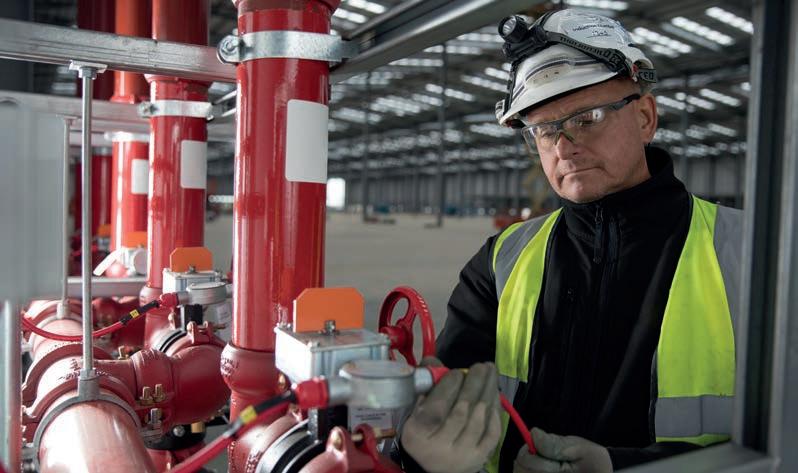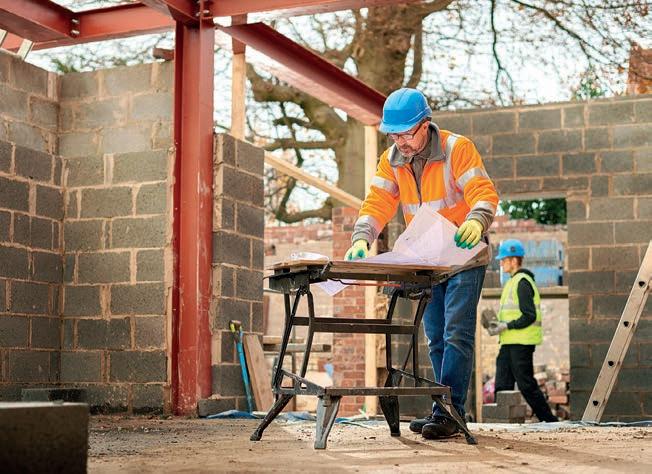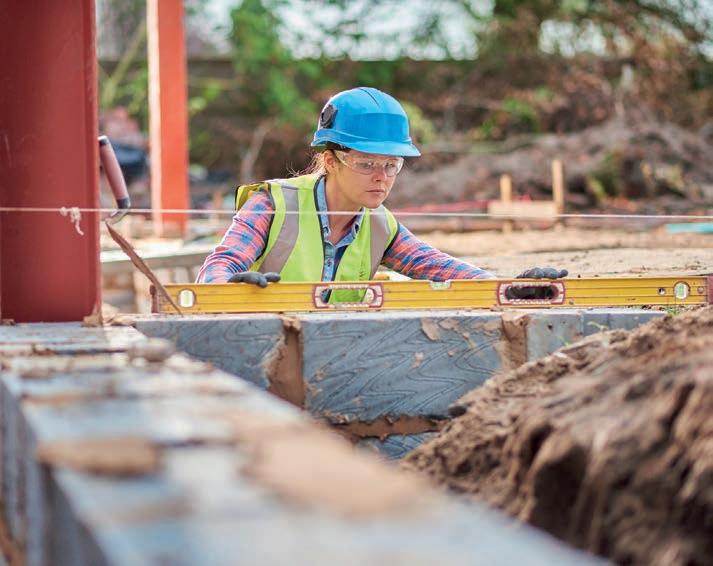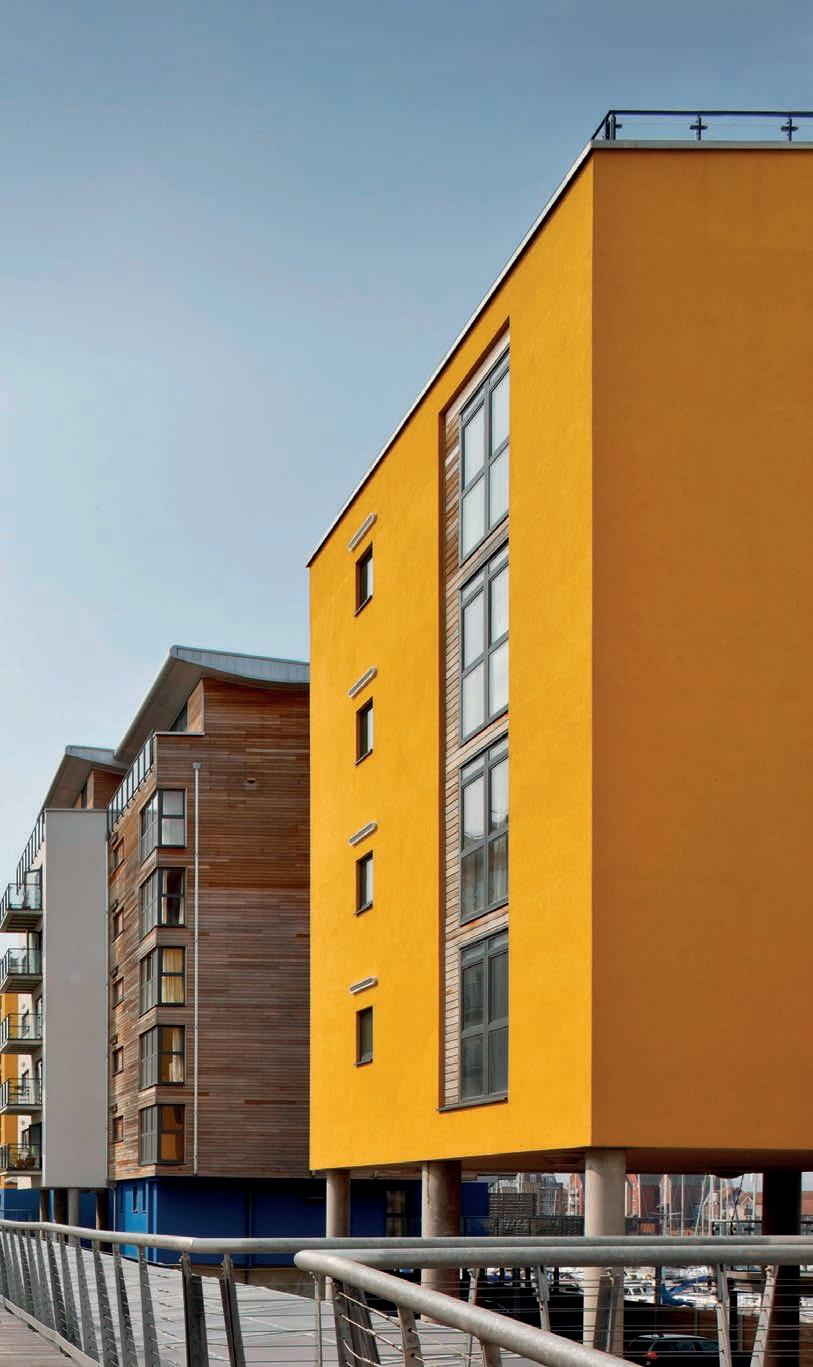
11 minute read
Tapestry of change
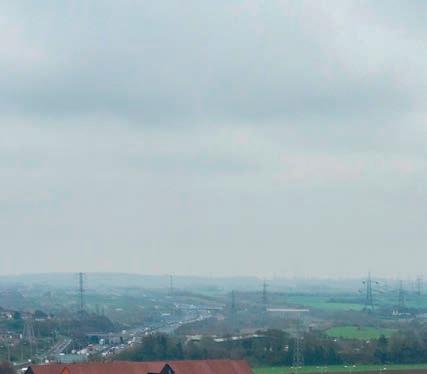


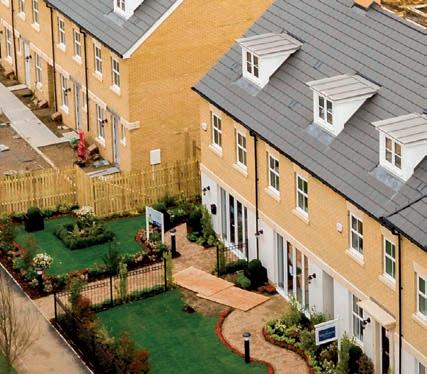
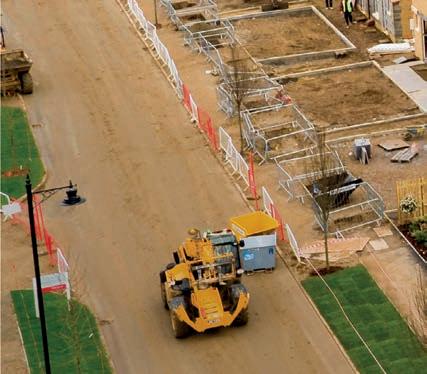


Part L and F are changing to weave energy effi ciency, ventilation and overheating risk into a co-ordinated policy and, as Elaine Knutt discovers, it sees a shift in focus from CO2 to primary energy

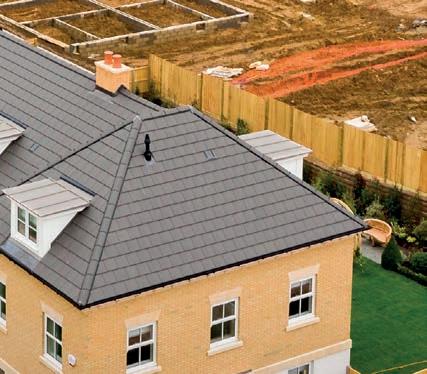
The regulations dictating the energyeffi ciency standards of new housing in England are about to undergo a signifi cant shift : an outline version of the Future Homes Standard (FHS) together with comprehensive updates of Part L (Conservation of Fuel and Power) and Part F (Ventilation) are due to be implemented this year. Together, their targets should raise the sector’s game and ambitions ahead of a tougher challenge to come – the full 2025 Future Homes Standard, which is likely to ban gas boilers and seek a 75-80% reduction on carbon emissions compared with Part L 2013.
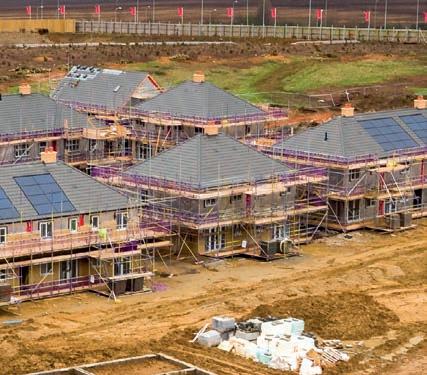
The text of the new Approved Documents and the interim FHS will incorporate feedback from a major consultation exercise from October 2019 to February 2020. However, ahead of publication there will be a further consultation on mitigating overheating risk in new housing and energyeffi ciency requirements for improving existing dwellings. Once that additional feedback is incorporated, the full package of documents is expected to have a commencement in late 2021, followed by a one-year transition period before the higher standards will have to be built into all new housing starts. CABE Chief Executive Dr Gavin Dunn has had an insider’s view of the process, sitt ing on the government’s Building Regulations Advisory Committ ee (BRAC) and chairing the BRAC working group on the 2025 Future Homes Standard and interim steps towards it. As he points out, the regulatory updates follow a period when it became clear that Part L for new dwellings and Part F had not been working in harmony. With Part L’s clear requirements on fabric, insulation and airtightness, which had dominated the industry’s thinking, Part F’s menu of options on the ventilation standards needed to dovetail with them but had proved harder to deliver. This has resulted in a generation of new-build homes with a higher prevalence of inadequate ventilation and a risk of overheating in summer, sometimes in combination with condensation in winter and poor indoor air quality putt ing the health of occupants as risk. In 2019, a progress report from the Committ ee on Climate Change, citing peerreviewed research from University College, London, suggested that overheating homes could cause 4,500 premature deaths per year by 2050 if nothing is done.
With climate change driving up summer temperatures and increasing the likelihood of heatwaves, Dunn says it is time to rebuild the regulatory structure on a fi rmer platform. “In the UK, we have quite an open and critical culture, and when updating regulations we should harness the learning
gas boilers are likely to be banned
of past mistakes as we go forward. It could be argued that we had taken our eye off the ball, either because the regulations had fallen behind requirements or simply the regulations weren’t being followed, and we need to fi x that because the evidence suggested that compliance with the regulations was poor.”
Overheating and draft recommendations on dealing with it, alongside proposals to improve the energy performance of existing dwellings, will be explored more fully in the soon-to-be-published consultation, where Dunn also suggests that the issue of “consequential improvements” – where domestic extensions or conversions would trigger a need to improve thermal performance – could also make a return.
Options to consider
The fi rst consultation, from October 2019 to February 2020, covered the updates to Parts L and F, and an outline version of the contents of the 2025 Future Homes Standard. With between 3,000 and 4,000 responses, Dunn says there was perhaps ten times the typical volume of submissions for this type of consultation suggesting a much greater interest in these proposals compared to past revisions.
As he explains, the new Part L represents a conceptual shift away from some of the ideas that held sway under the Code for Sustainable Homes, the six-step framework that was due to mandate zerocarbon homes by 2016 but was rolled back in 2015. At the level of individual homes, it shift s the focus away from achieving zero on a notional balance sheet of carbon emissions in favour of minimising the primary energy used for the regulated energy uses of heating, lighting, domestic hot water and ventilation. In other words, the principal metric to be measured and managed has changed from CO2 to kWh.
The reduced focus on carbon emissions responds to the fact that CO2 has become less useful as a proxy for reducing energy consumption per se. With the electricity grid decarbonising more rapidly than previously expected, the resulting decrease in measured carbon emissions could fl att er the energy performance of homes that lack rigorous airtightness or insulation standards and would be unhelpful for making the shift to low-carbon heating that will be necessary in the coming years.
So, Part L 2021 features a target energy rate to replace the target emissions rate, giving homeowners or housing providers a more accurate measure of overall energy usage. As with its forerunner, the target energy rate will be calculated at the design
stage using authorised SAP (standard assessment procedure) soft ware.
However, carbon emissions will be retained as a secondary metric in the updated Part L, with the new update proposing up to a 31% improvement over the emissions typical of a Part L 2013 design to be followed by a 75%-80% uptick (versus 2013 standards) for the Future Homes Standard in 2015. Responses to the proposals suggest that people want to go “further and faster” says Dunn.

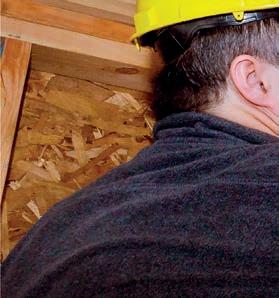
Put to the test
One likely change in Part L 2021 will be the requirement to carry out an airtightness test on every completed fl at or house, a potential step-change for housebuilders that Dunn says has been greeted with relative equanimity. “Major house-builders have said it was not an issue, as there were plenty of experts available to do the testing. Their priority was to make sure there was a level playing fi eld [with smaller developers] so they were supportive.”
Dr Hywel Davies, Technical Director of the Chartered Institute of Building Services Engineers, and chair of BRAC, notes that such a requirement would still cast ripples into the pond. “Housebuilders will have contracts with testing organisations that will need to be extended, and is there enough testing kit available? You cannot turn a requirement like that on in fi ve minutes.”
The new update could usher in additional shake-ups in airtightness testing, with a proposal that the testing methodology should be published by CIBSE rather than by one of the existing competent persons schemes.
In addition, the consultation proposed a new testing methodology. For two decades, tests have been carried out using a blower door test, where a calibrated fan blows air into the home until a defi ned pressure of 50 pascals is achieved and the total airfl ow needed is recorded. Based on research originally undertaken at Nott ingham University, a new pulse test procedure has been developed. This relies on placing a compressor inside a home and emitt ing a pulse of pressurised air, then measuring how long it takes for the higher pressure to revert to normal.
Davies acknowledges that this potentially simpler methodology could involve a learning curve for the industry. “People understood the values from blower door tests; but what would the equivalent values in a pulse test look like? We need more testing to calibrate the results from the two tests.”
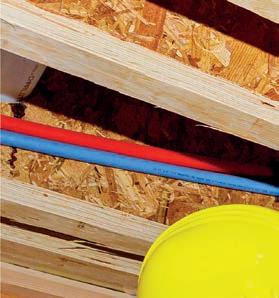
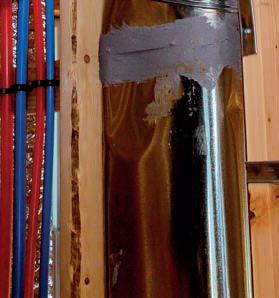
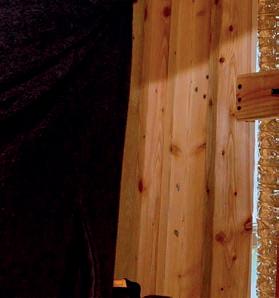
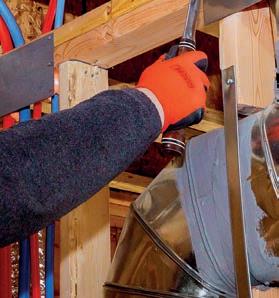
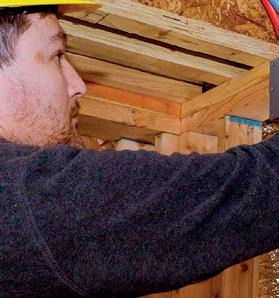
The Future Homes Standard
The other much-trailed change could come in the outline Future Homes Standard, in the form of a future ban on connecting new homes to the gas grid by 2025. With gas boilers no longer an option, this would force housebuilders to install low-temperature heating systems such as air source heat pumps in at least a generation of new housing.
“We will move back in time to the 1970s when new housing estates were not necessarily connected to the national gas grid,” says CIBSE’s Davies. While hydrogen could eventually replace natural gas in the nation’s grid, he feels that few developers would install the pipes to allow retrofi t connections.
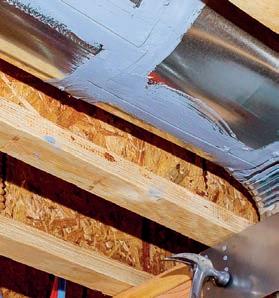
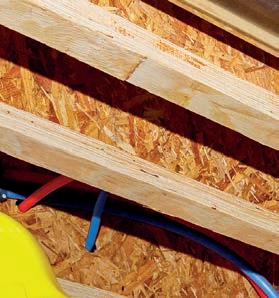
He sees the ban as an important fl agship policy in the government’s wider commitment, adopted in July 2019, to achieve net-zero emissions by 2050. “Bluntly, we need a fi rm target, and I would be extremely surprised if [the government] rolled it back,” he says, referring to the loss of momentum following the 2015 zero-carbon U-turn, and the shelved Green Deal retrofi t campaign.
As Dunn says, lower temperature heating systems will require a “signifi cant” focus on fabric effi ciency, while Davies highlights the need to upscale capacity in the heat pump sector. “In 2020, we installed just 20,000 heat pumps. If we are building 200,000 to 300,000 homes a year by 2025, then we have four years to upgrade manufacturing capacity and the number of people who can install them. We need that target to maintain momentum and to give investors the confi dence to invest.”
Further implications, Dunn notes, will be the need to design in space for electricity or heat storage batt eries, while a mandate to install electric vehicle charging points will be addressed in separate regulations. The FHS will also set out future requirements on installing smart sensor technology on energy consumption, air quality and other factors. “There isn’t quite the confi dence in the technology to do that now, but by 2025 we would hope to have sophisticated performance verifi cation,” says Dunn.

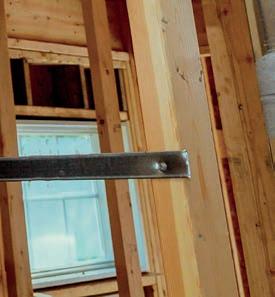
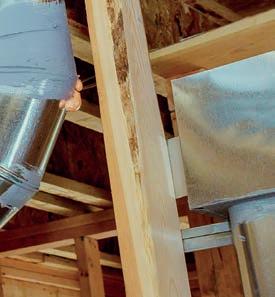
A breath of fresh air
Meanwhile, changes to Part F are likely to centre on simplifying and stripping back the guidance. Research commissioned by the Ministry of Housing, Community and Local Government and carried out by Aecom showed that very new few homes built to Part L 2013 fully complied with any of the three ventilation methodologies set out in Part F 2013. Dunn also notes that publication of the studies in September 2019 itself was a clear signal of government’s intent to act on the fi ndings.
The new update will, therefore, focus on simplifying the guidance to design teams. “For trickle vents, there will be a room by room approach to dictate the size of vents, making it simple to comply and visually inspect,” says Dunn. More complex systems using mechanical ventilation heat recovery units will still be possible, but requirements on the design, testing and commissioning are likely to be strengthened.
Dunn believes that large sections of the target audience are not yet aware that the curtain is about to rise on a new act, although Covid-19’s place at the centre of stage for most of 2020 is clearly a factor. “Unfortunately all too oft en the industry doesn’t pay enough att ention to these things as they happen quite slowly; and thanks to transitional arrangements, they oft en have plenty of time to fi gure it out even aft er regulatory changes come into force.”
However, another key diff erence that Dunn highlights is that the transition period has been set at just 12 months. That followed evidence that some volume housebuilders had started work to build out large sites in order to lock in the prevailing Part L rules rather than building to newer updates.
“In 2018, we looked at how many homes were still being built to older regulations standards and found that a substantial number of homes built in 2018 were still following 2006 standards,” Dunn says. “That’s unacceptable from a consumer point of view. The transitional arrangements were there so as not to disrupt investment in housing; that worked but in many cases it went too far and can’t happen this time.”
Instead, the transitional arrangements will apply on a plot-by-plot basis, with the result that full compliance across the board can be expected within about two years of implementing the new regulations. “For the housebuilders still building to older standards as a result of the long transitional arrangements in the past, the jump [to Part L 2021] will be quite signifi cant,” Dunn predicts.
Overall, the industry can infer that the 2021 regulations are a chance to upgrade design standards and build quality ahead of the Future Homes Standard 2025. With climate change urgency ramping up and the 2050 net zero target ever closer, the tough 2025 targets will only leave room for those that can truly deliver low-energy designs and verifi able performance.


